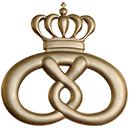
Oral Storytelling Traditions in Denmark
Sunday, September 26, 2021
As children, we loved to gather around our parents and grandparents as they told us exciting fairy tales and traditional stories passed down from our ancestors. Perhaps it was also the combination of good company and delicious homemade food, uniquely suited to the story of the night, that made this oral storytelling tradition extra special and long-lasting.
The History of Oral Storytelling
Oral storytelling was the easiest way to share tales through the generations before people learned to read and write. Danish folklore was usually shared around a fire and with a combination of music, dance and poetry to entertain and delight the audience. Warm pastries were usually prepared to keep little hands occupied, bellies full and children’s minds eagerly awaiting the next story night.
Much like how bakers know the perfect flavor combination to impress their customers, so too did the storytellers. They added their creative flair to a fairy tale, resulting in several variations or character changes to suit their audience that night. This captivating connection between the storyteller and audience helped foster a sense of community as people from various regions would gather to hear the same folklore.
The Beginning of Written Stories

While some of these Danish folk tales weren’t well received at the time, classics like “The Princess and the Pea” and “The Little Mermaid” would grow to inspire an international audience and influence children’s storytelling for generations. As children, we often heard these stories long before big-screen adaptations, and looked forward to the “lumpy mattress” nut Kringles or hand-shaped “mermaid tail” pastry horns.
Storytelling and the Danish Languages

Soon after, the Middle Danish dialect emerged, containing words influenced by other languages such as Latin and Greek. Contact with Germany saw some Germanic words and grammar entering the language, yet it wasn’t until the 1500s that Danish was recognized as a proper language for literature and only after it was incorporated into religion. The first printed books helped to unify Danish spelling and grammar across the country and create a standard dialect in the 1700s.
Fun fact: Danes, Norwegians and Swedes can talk to this day without an interpreter!Our Favorite Storytelling Snacks

Almond Custard Seven Sisters Coffee Cake
This classic bakery staple is named after a traditional story about the constellation of the Seven Sisters of Pleiades. We use traditional Danish flavors and techniques to create our coffee cake, filled with creamy almond filling and smooth custard, then bake it into seven spiral rolls and top with slivered almonds.
Raspberry Kringle

Almond Kringle
We’ve been making this classic for over 60 years and it has always been a family favorite. Many traditional Danish pastries feature smooth and sweet almonds, making this Kringle perfect for those tales of ancient heroes and bravery.
Danish Pecan Sticky Buns

Get Desserts from O&H Danish Bakery Delivered Straight to Your Door
Just as we love to share our favorite Danish fairy tales with the next generation, we also enjoy sharing our delicious story time snacks with you. You can easily order mouthwatering cakes, pastries and slices online from our selection of fruit, chocolate and nut desserts and have them delivered straight to your door. Reach out to us if you have any questions.




